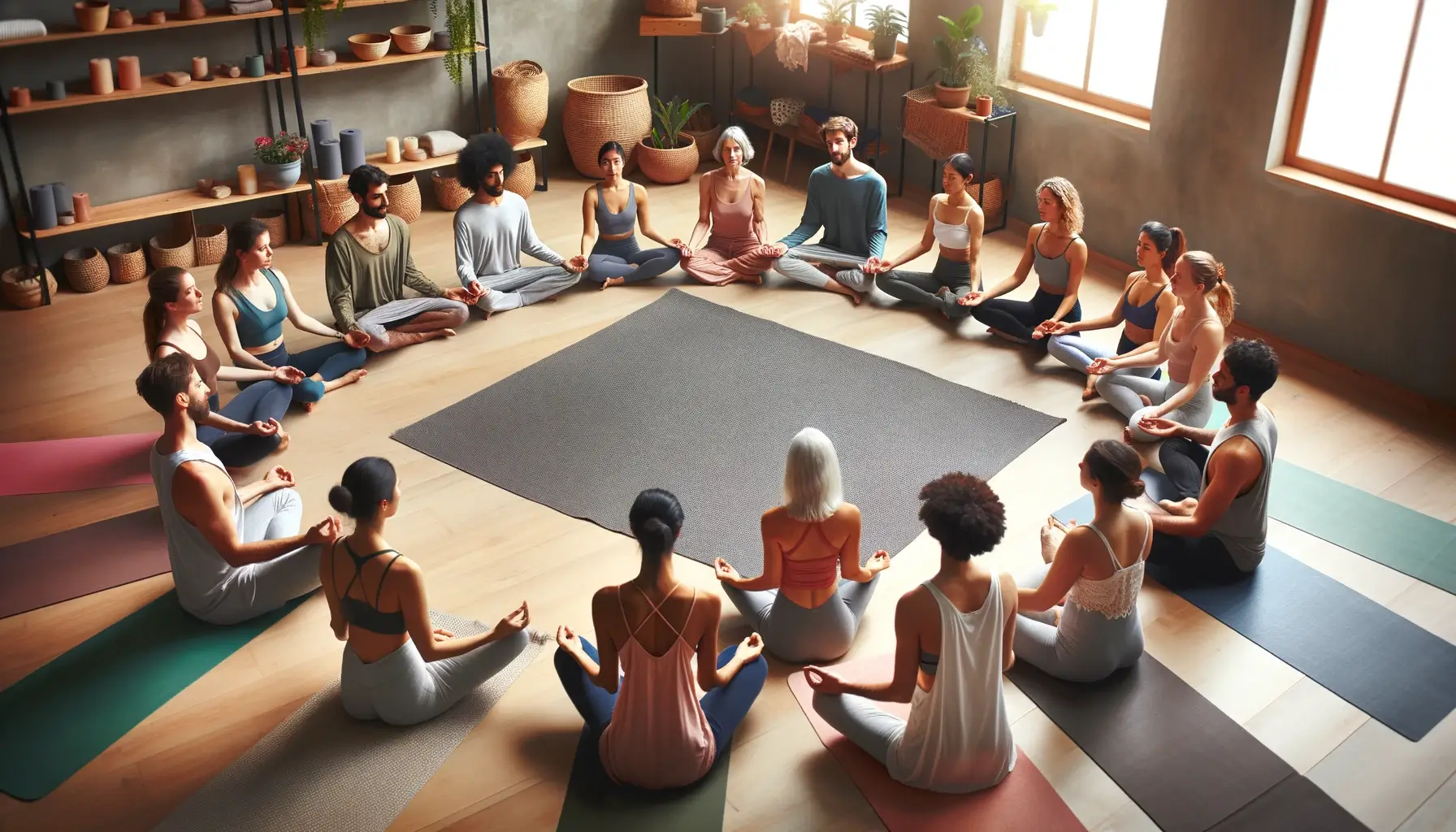With the ever-growing popularity of yoga, it’s crucial to acknowledge the importance of embracing diversity in our practice. In a world that is increasingly divided in many aspects, yoga serves as a powerful tool to unite us regardless of our differences. Whether you are young or old, flexible or not so much, a beginner or an experienced yogi, there is a place for every body on the mat. This blog post will explore the benefits of making yoga inclusive and welcoming to all, regardless of shape, size, color, or ability. Let’s investigate how we can celebrate diversity and cultivate a more compassionate and accepting yoga community for everyone.
Key Takeaways:
- Diversity in Yoga: Embracing diversity in yoga means creating a practice that is inclusive and welcoming to individuals of all backgrounds, shapes, and abilities.
- Adaptation and Modification: It is important to understand that not every pose or practice will work for everyone, and being open to adaptation and modification is key in embracing diversity in yoga.
- Inclusivity and Acceptance: Cultivating a practice that promotes inclusivity and acceptance allows individuals to feel comfortable and supported in their yoga journey regardless of their differences.
- Empowerment and Self-Acceptance: Encouraging self-empowerment and self-acceptance in yoga practice can help individuals build confidence and a positive relationship with their bodies.
- Community and Connection: Building a community that values diversity in yoga creates a space where individuals can connect, support each other, and celebrate the uniqueness that each person brings to the practice.
Yoga and the Diversity of Bodies
Understanding Different Body Types
If we truly want to embrace diversity in yoga, we must first understand the variety of bodies that exist. Body types can vary greatly, from petite to plus-size, from flexible to less flexible. Knowing how to cater to these differences is key to creating an inclusive practice.
| Petite | Plus-size |
| Flexible | Less Flexible |
| Muscular | Lean |
| Tall | Short |
| Curved | Straight |
Adapting Yoga Poses for Inclusivity
Inclusivity in yoga practice involves modifying poses to make them accessible to a diverse range of bodies. For instance, using props like blocks or straps can help individuals with limited flexibility still experience the benefits of a pose. It’s important to prioritize safety and comfort when adapting poses to ensure that all participants feel welcome and supported.

The Mental and Emotional Landscape
Cognitive Diversity in Yoga Practice
One of the beautiful aspects of yoga is that it can be adapted to suit individuals of all cognitive abilities. The practice of yoga involves a wide range of movements and breathing techniques that can be modified to accommodate different levels of physical and cognitive functioning. This means that everyone, regardless of their cognitive diversity, can experience the benefits of yoga practice.
Emotional Resonance and Acceptance
Any emotional experience can find resonance and acceptance within the practice of yoga. Whether someone is dealing with anxiety, depression, or simply the ups and downs of daily life, yoga provides a safe space to explore and process these emotions. Through mindful movement and focused breathing, individuals can cultivate self-awareness and self-acceptance in a nurturing environment.
Emotional resonance in yoga goes beyond just acknowledging and accepting emotions. It involves embracing all the varied feelings that arise during practice and allowing them to be transformative. By immersing oneself in the practice with emotional openness, one can experience a profound sense of release and healing.
The Intersection of Yoga and Culture
Historical Context and its Modern Implications
Many centuries ago, yoga originated in ancient India as a spiritual practice aimed at achieving enlightenment. Over time, it has evolved into a global phenomenon with diverse interpretations and practices. The historical roots of yoga are intricately intertwined with Indian culture, philosophy, and spirituality.
Yoga in Various Cultural Perspectives
The integration of yoga into different cultural contexts has led to a rich tapestry of practices and beliefs. With globalization and the spread of yoga to the West, various cultural perspectives have influenced its modern manifestation. From the mindfulness emphasis of the West to the spiritual traditions of the East, yoga has transcended cultural boundaries.
Context: The fusion of yoga with different cultural perspectives has not only enhanced its accessibility but also sparked debates on cultural appropriation and authenticity. While some view the diversification of yoga as a positive evolution that promotes inclusivity, others caution against diluting its spiritual essence. It is crucial for practitioners to respect the roots of yoga while embracing its universal appeal.
Inclusivity in Practice: A Guide for Teachers and Practitioners
Crafting Inclusive Yoga Classes
All individuals, regardless of their background or physical abilities, should feel welcome and accommodated in yoga classes. Smoothing out transitions from one pose to another and offering modifications for different levels can make classes more accessible to a wider range of practitioners. Emphasis on breath work and mindfulness can create a sense of unity among students, fostering an environment of inclusivity in practice.

Language, Accessibility, and Environment
For a truly inclusive yoga practice, it is important to be mindful of the language used, the accessibility of the space, and the overall environment. Using language that is neutral and free from cultural appropriation helps avoid alienating or offending certain individuals. Ensuring that the space is wheelchair accessible and providing props for support can make the practice welcoming to people with physical limitations. Cultivating a safe and non-judgmental atmosphere encourages practitioners of all backgrounds to feel comfortable and supported in their practice.
Classes should strive to be inclusive, safe, and welcoming for all individuals. By embracing diversity in all aspects of the practice, teachers and practitioners can create a space where everyone feels valued and respected. Encouraging open communication and feedback from students can also help in continuously improving the inclusivity of yoga classes.
Final Words
Presently, as we conclude our discussion on ‘Yoga for Every Body – Embracing Diversity in Your Practice’, it is evident that the practice of yoga is truly inclusive and adaptable to all individuals, regardless of their abilities, body types, or backgrounds. By embracing diversity in our practice, we not only enrich our own experiences but also contribute to a more harmonious and accepting community. Let us continue to explore and celebrate the beauty of diversity in yoga, as it is through this inclusivity that we can truly embody the essence of unity and oneness in our practice.
FAQ
Q: What is the book “Yoga for Every Body – Embracing Diversity in Your Practice” about?
A: The book explores how individuals of all shapes, sizes, and abilities can benefit from and enjoy the practice of yoga regardless of their background or physical condition.
Q: How can yoga benefit individuals from diverse backgrounds?
A: Yoga promotes mental and physical well-being by incorporating breathing exercises, meditation, and physical postures that can be modified to suit different body types and abilities.
Q: Can beginners with no prior yoga experience practice the techniques mentioned in the book?
A: Yes, the book provides step-by-step guidance and modifications for beginners, making it accessible for those new to yoga or those with limitations.
Q: Why is diversity important in yoga practice?
A: Embracing diversity in yoga practice allows individuals to feel included and supported, fostering a sense of community and empowerment among practitioners of all backgrounds.
Q: How can one incorporate the principles of diversity from the book into their yoga practice?
A: Practitioners can embrace diversity in their yoga practice by being open-minded, respectful of others’ differences, and by modifying poses to accommodate various body types and abilities, creating an inclusive environment for all.

